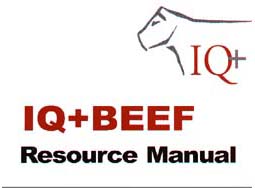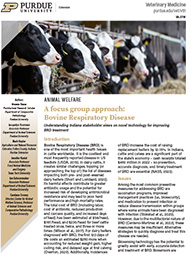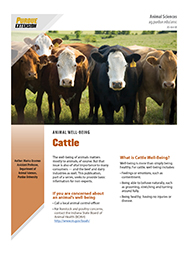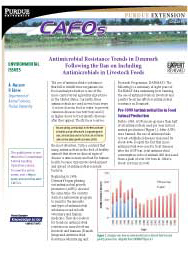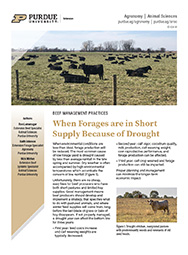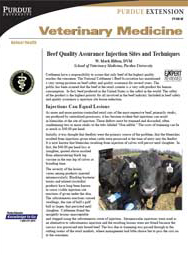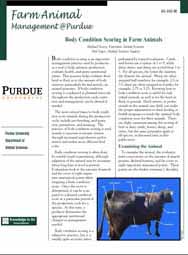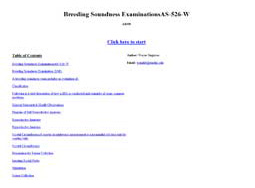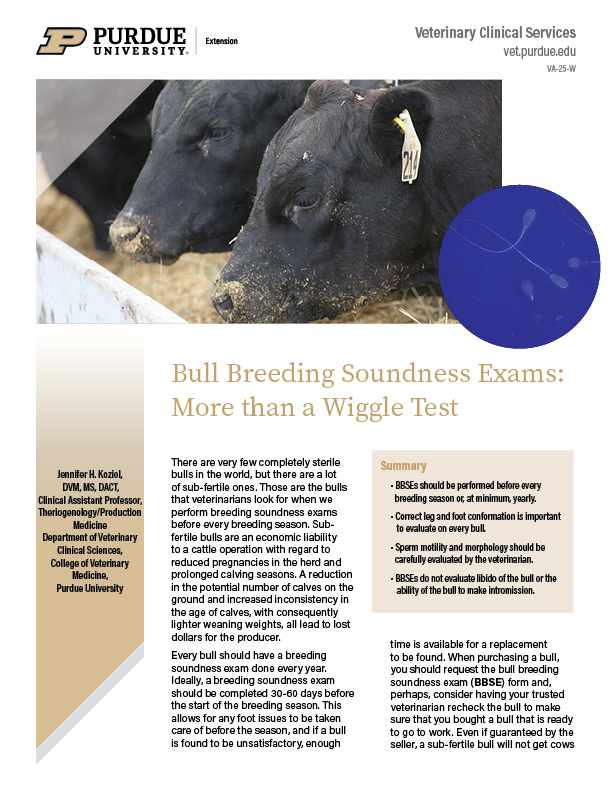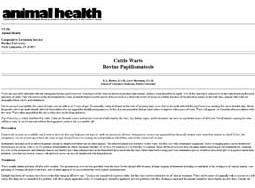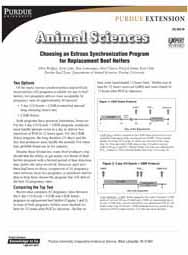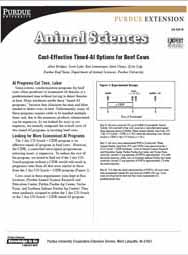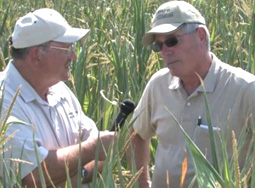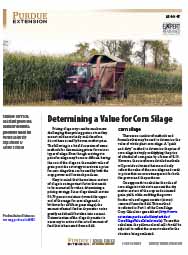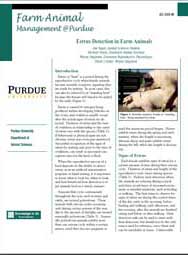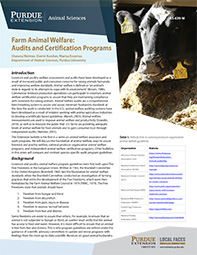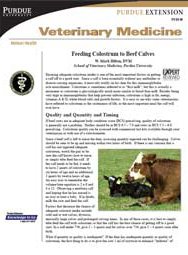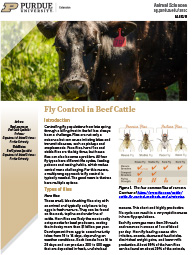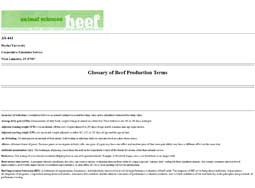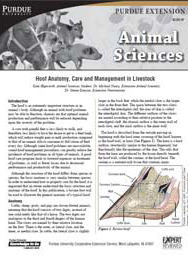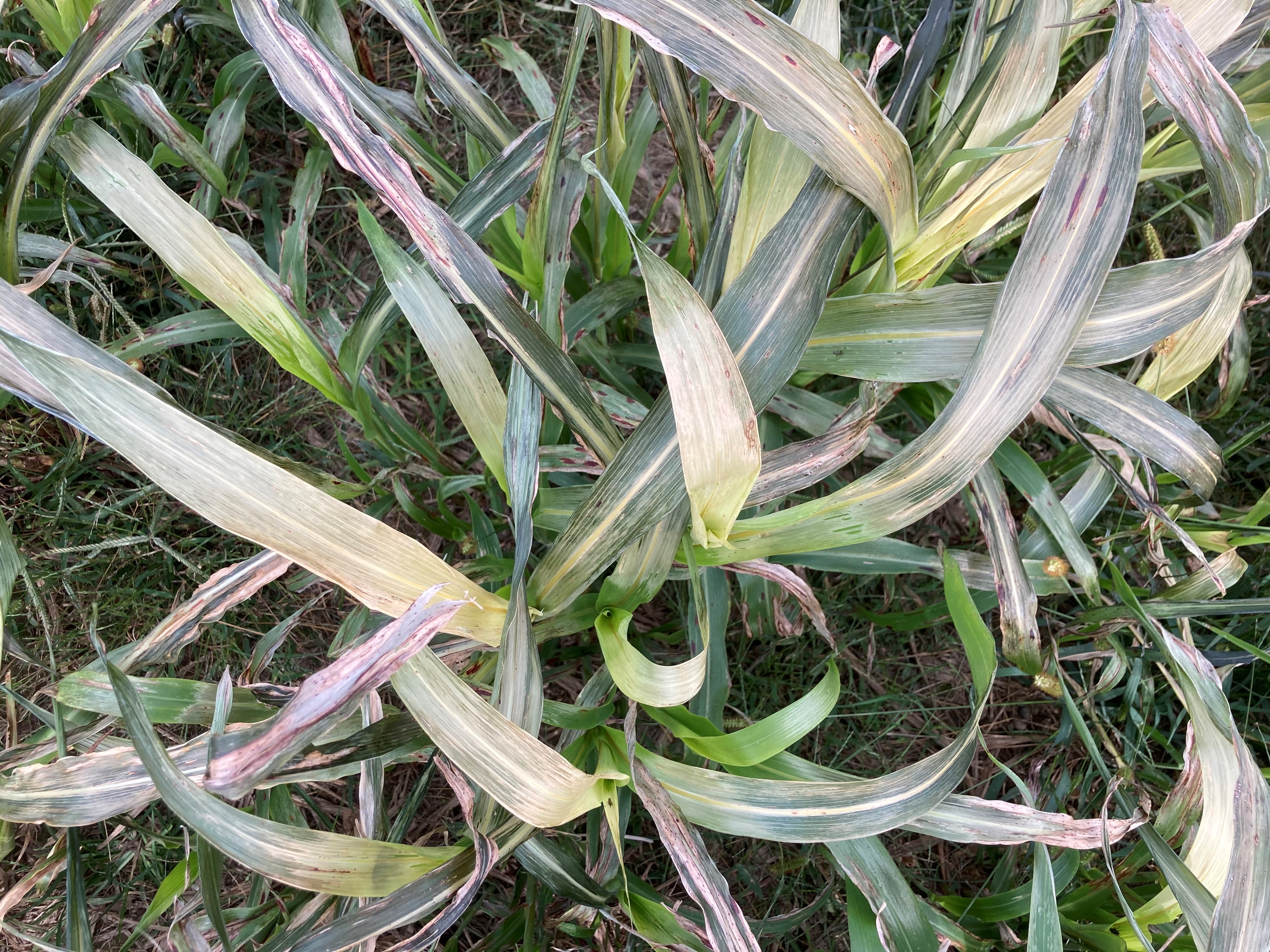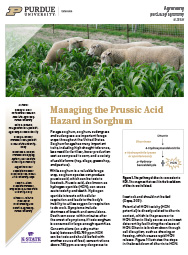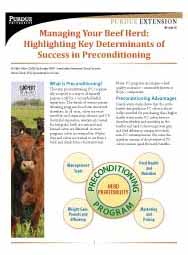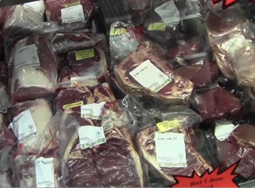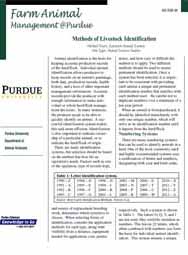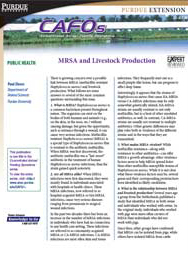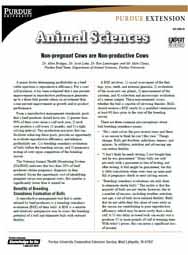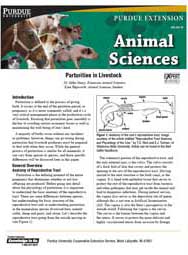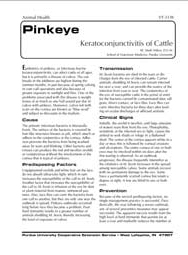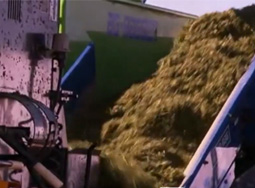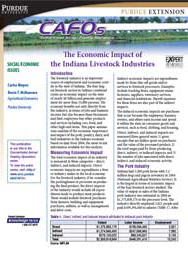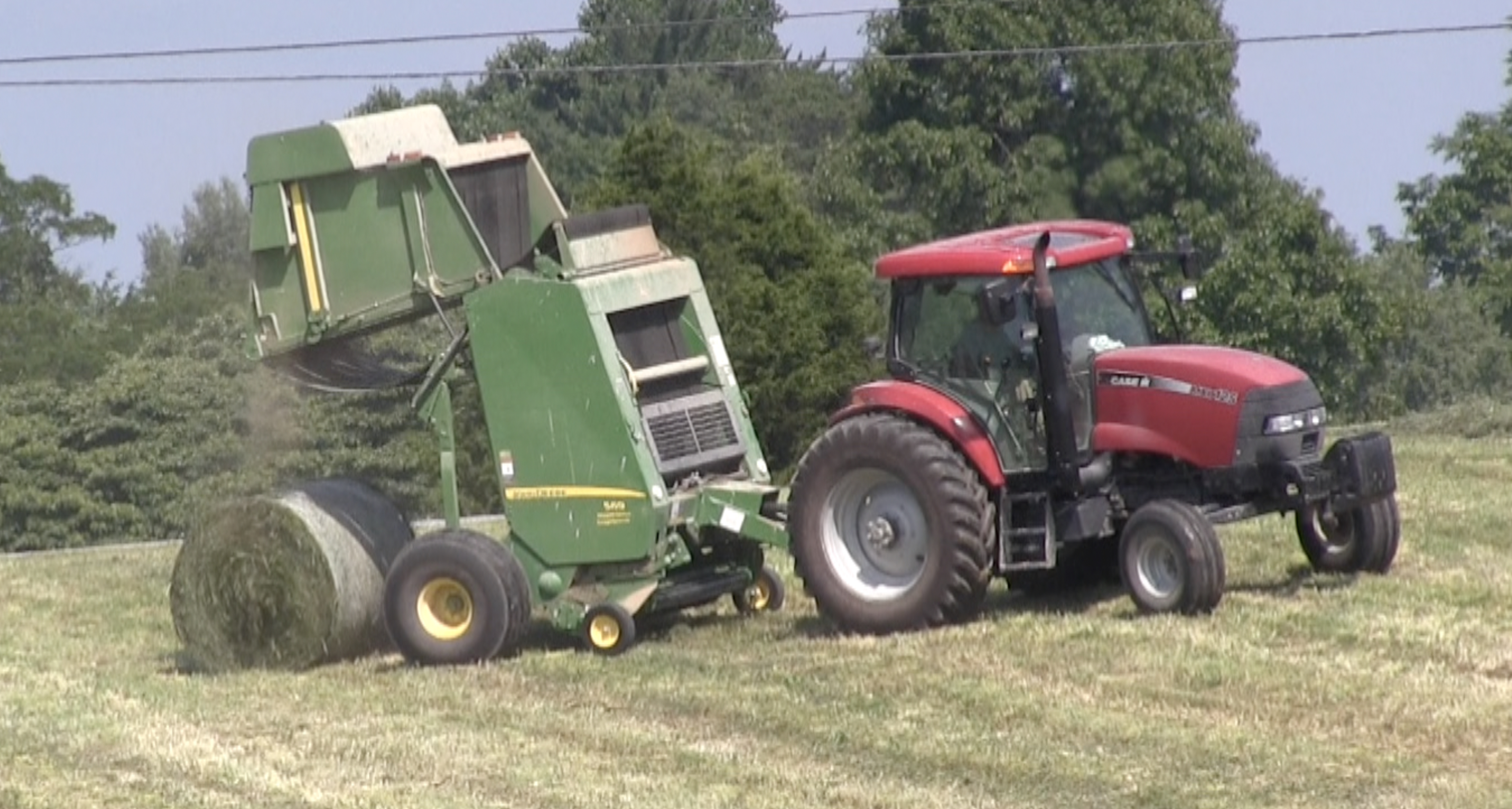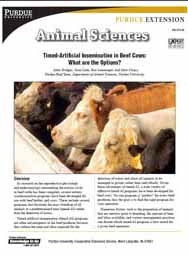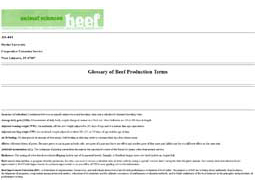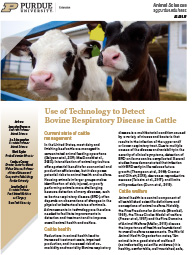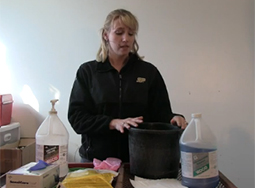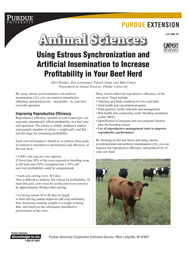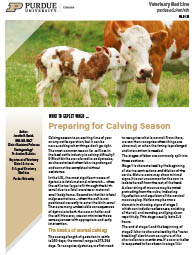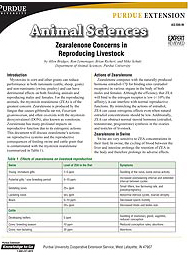Livestock
Beef Cattle
A focus group approach: Bovine Respiratory Disease
Bovine respiratory disease (BRD) is the costliest and most frequently reported disease in U.S. feedlots. Alternative strategies to diagnose and treat the disease are needed. In this publication, Purdue and other research...
The well-being of cattle -- beef or dairy -- is an important issue for consumers, the beef and dairy industries, and, of course, to the animals. In this publication, a Purdue University professor discusses well-being...
The use of antimicrobials (substances that kill or inhibit microorganisms) in food animal production is one of the more controversial agricultural practices in the United States. The author of this 4-page PDF publication...
Beef Management Practices: When Forages are in Short Supply Because of Drought
A drought year can affect a beef producer's bottom line for three years. Proper planning and management can minimize the longer-term economic impact. In this publication, Purdue University experts review 18 management pr...
Beef Quality Assurance Injection Sites and Techniques
Cattlemen have a responsibility to assure that only beef of the highest quality reach the consumer. This publication provides recommendations to assure beef quality....
Bull Breeding Soundness Exams: More than a Wiggle Test
Sub-fertile bulls are an economic liability to a cattle operation. In this publication, a Purdue University researcher explains the importance of annual bull breeding soundness (BBSE) exams, the steps taken during such e...
Cattle Warts--Bovine Papillomatosis
This publication discusses prevention and treatment of cattle warts. ...
Choosing an Estrous Synchronization Program for Replacement Beef Heifers
Of the many estrous synchronization and artificial insemination (AI) programs available for use in beef heifers, two programs deliver more acceptable AI pregnancy rates. This publication shows a comparison between two of...
Cost-Effective Timed-AI Options for Beef Cows
In this two-page PDF, the authors describe and compare two timed, artificial insemination programs for use in beef heifers. They recommend different programs for different situations....
Dealing with Nitrates in Drought Stress Corn, Cattlemen's Perspective
This video addresses the issue of using stressed corn in a drought as feed for cattle. The problems/challenges such as the high nitrate levels are addressed. Silage vs Greenchop is addressed. introducing high nitrate ...
Determining a Value for Corn Silage
Pricing silage crops can be much more challenging than pricing grains. This publication outlines methods for determining prices for various types of silage and includes a Web link to Purdue's Corn Silage Crop Calculator ...
Estrus Detection in Farm Animals
Estrus or "heat" is a period during the reproductive cycle when female animals become sexually receptive, signaling they are ready for mating. This publication provides information about the estrous cycles for various an...
Farm Animal Welfare: Audits and Certification Programs
This bulletin is the first in a series on animal welfare assurance and audit programs. Three Purdue University researchers discuss the foundation of animal welfare, ways to assure livestock and poultry welfare, nation...
Feeding Colostrum to Beef Calves
Feeding Colostrum to Beef Calves describes why it is important to get a calf off to a good start by ensuring adequate colostrum intake. In addition to providing antibodies, it provides essential nutrients. Besides being ...
Flies are more than a nuisance for cattle. Their bites are irritating and can transmit diseases, too. In this publication, Purdue University researchers discuss face, horn, stable and house flies along with methods of co...
Forage Field Guide, fourth edition
The new fourth edition of this guide contains 324 pages of information for forage and livestock producers and the agricultural industries that serve them. This new edition features updates and changes throughout, includi...
Forage Field Guide, fourth edition (25/box)
This is a box of 25 copies of our popular in-field reference. The fourth edition of this pocket-size, in-field reference provides information for forage and livestock producers and the agricultural industries that serve ...
A glossary of common terms encountered when discussing genetic and reproductive areas of beef production. ...
Hoof Anatomy, Care and Management in Livestock
This publication discusses the complex hoof structure and the role that it plays in the overall health of an animal. A lame animal is not only in pain, but it is an extra expense that most producers cannot afford. This p...
Managing Prussic Acid in Sorghum
Prussic acid poisoning can be a concern if livestock consume freeze-damaged sorghum plants. This concern can be minimized if management strategies are utilized. This video discusses ways to manage sorghum so prussic acid...
Managing the Prussic Acid Hazard in Sorghum
Sorghum is a valuable forage crop but can produce prussic acid (also known as hydrogen cyanide, HCN), which can be toxic to livestock. In this publication, Purdue and Kansas State researchers discuss characteristics affe...
Managing Your Beef Herd: Highlighting Key Determinants of Success in Preconditioning
Publication providing beef cattle producers information on preconditioning, a management practice for preparing calves for a successful feedlot experience. Covers team building, weight gain, herd health and nutrition and...
Meat Processing Options for Small Farms - video
Purdue experts discuss what small farms need to consider about meat processing.
**The "Free Download" button takes you to this video on YouTube.
All videos and other publicat...
Methods of Livestock Identification
Animal identification is the basis for keeping accurate production records of the herd/flock. This publication provides information about numbering systems and identification methods such as ear tagging, freeze branding,...
There is growing concern over a possible link between MRSA (methicillin resistant Staphylococcus aureus) and livestock production. This publication answers several of the most common questions surrounding this issue. ...
This publication covers parturition—the process of giving birth—in livestock. It covers the anatomy of the reproductive tract, fertilization and pregnancy, as well as specifi information related to each speci...
Pinkeye: Keratoconjunctivitis of Cattle
This bulletin provides information about the causes, symptoms and transmission of pinkeye in cattle. It also provides information on prevention and treatments for pinkeye. ...
Safety Harvesting Quality Forage in a Drought
Alternative forage and nitrates are discussed - precautions and making silage. Opportunities and precautions when looking to alternate ways to feed cattle. Safety in feeding cattle high nitrate feed is discussed.
Making excellent quality hay is a process that requires proper use of the right harvest equipment at the right stage of forage growth. Doing this will minimize yield and quality losses so nutritional needs of livesto...
Treating for Internal Parasites of Cattle
This publication discusses times to worm, types of wormers commonly used, withdrawal time before slaughter, and methods of administration to various classes of cattle. ...
Use of Technology to Detect Bovine Respiratory Disease in Cattle
Bovine respiratory disease is an economically costly and important animal welfare concern for cattle. In this publication, Purdue researchers examine the role of technology in BRD detection, including the pros and cons o...
Using CIDRs in Reproductive Management of Beef Cows
This video describes the proper techniques for using CIDR in reproductive management of beef cows. Producers will learn the specifics to help with reproductive management.
All videos and other publications available ...
This three-page, Web-only publication tells producers how they can use estrous synchronization and artificial insemination (AI), producers to improve reproductive efficiency and productivity—and profits&mdash...
What to Expect When: Preparing for Calving Season
Calving difficulty is the most common reason for calf loss in the beef cattle industry. In this publication, part of the "What to Expect When:" series, a Purdue University veterinarian discusses the stages of labor and e...
Zearalenone Concerns in Reproducing Livestock
Mycotoxins in corn and other grains can reduce performance in both ruminants (cattle, sheep, goats) and non-ruminants (swine, poultry) and can have detrimental effects on both finishing animals and reproducing males and ...









